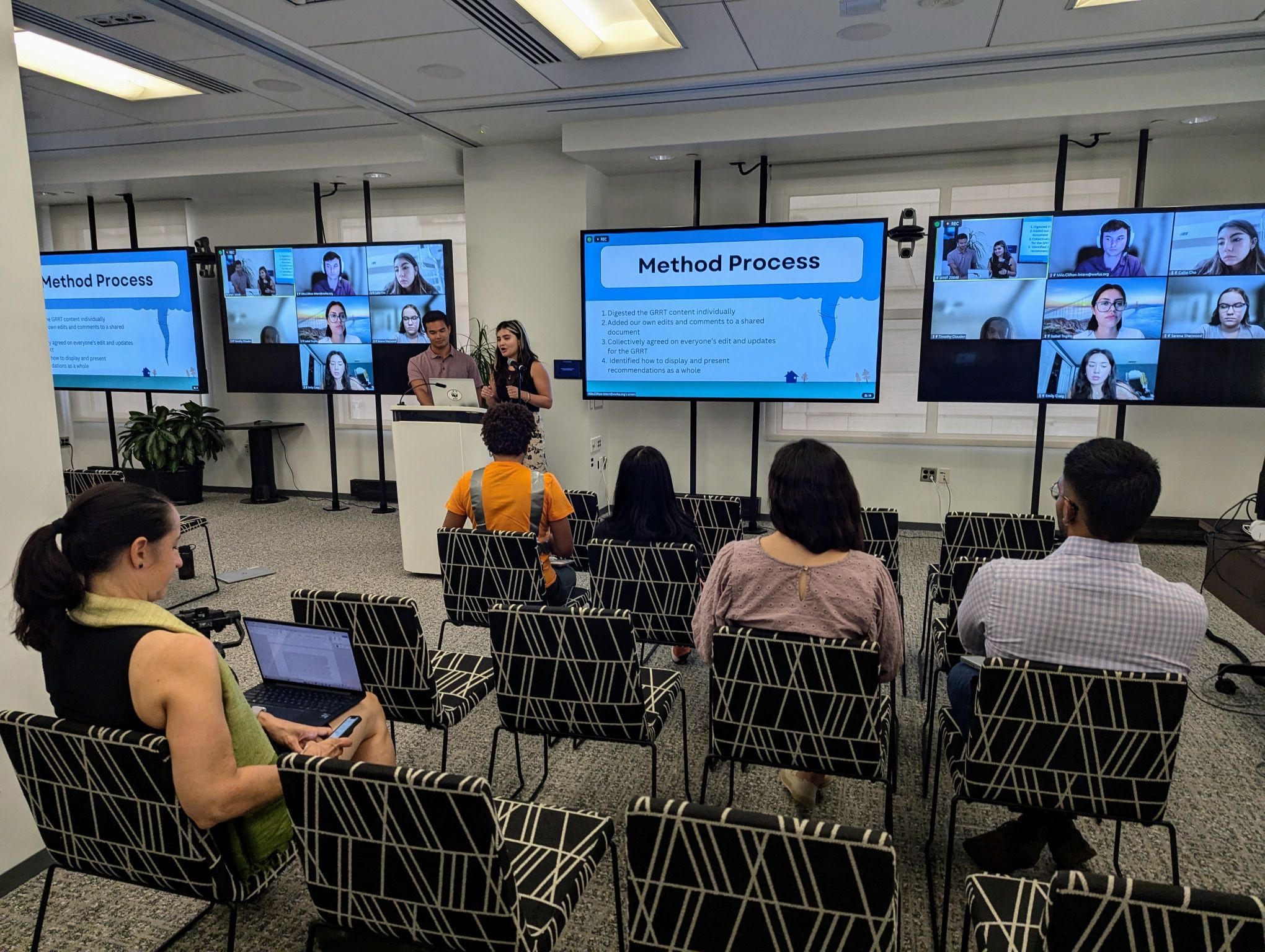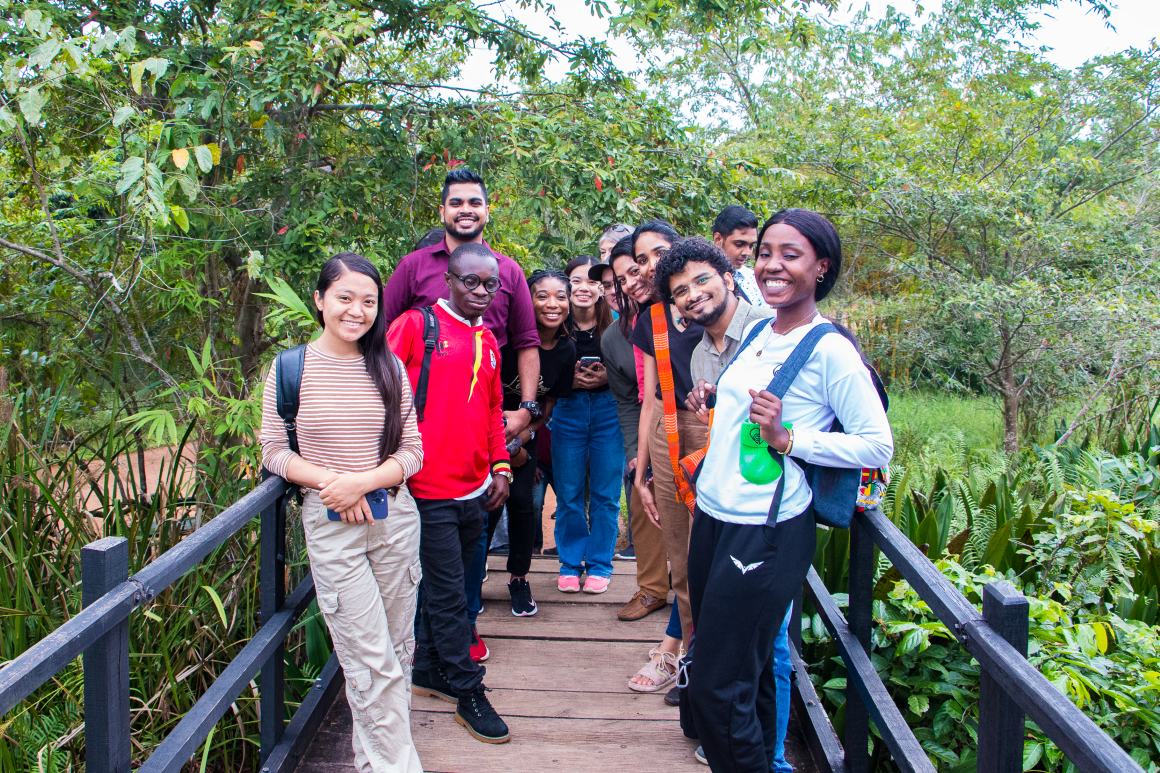Published on:
12 July 2021
Share this:
The Environment and Disaster Management team conducted a virtual Flood Green Guide training in March and April 2021. Through this multi-week course, NGO staff, government water managers, engineers, and environmental scientists across South Asia explored natural and nature-based flood management and risk reduction.
Hamidul Haque, an alum of the training course, is a Water Resources Engineer based in Dhaka, Bangladesh. In this conversation, he reflects on sustainable flood management in his local context. The discussion has been edited for brevity and clarity.
Why did you want to attend the Flood Green Guide training to learn about natural and nature-based flood management?
As a child in 1998, I witnessed Bangladesh’s devastating floods. I was living in a small town, and I remember dead cows floating through the rivers. That experience blazed into my mind the importance of mitigating floods.
Recently, Bangladesh has had a visible increase in hurricane-induced flooding due to the climate crisis. It’s also clear that the pattern of rainfall has been changing because there are often larger amounts of rain in smaller amounts of time.
Until recently, flood management methods that mimic what nature offers have not been present in Bangladesh. We have relied on structural solutions. But I know from my engineering background that structures can fail at any time and create a crisis. So it’s important to prioritize integrating what nature offers. I was looking for an opportunity to figure out how to apply nature-based methods in a structured way in my country, and the Flood Green Guide training was a good fit for that.
What did you learn in this training that you plan to apply to your work?
Bangladesh has various regulations around flood management but lacks guidelines around nature-based solutions. The training course helped to guide me step by step through the process of designing a sustainable flood management project. It was helpful to learn how to set up the objectives, how to get feedback from the community, and how to manage operations and maintenance. As someone with a technical background, I found the presentation about flood modeling by Kyle McKay of the Army Corps of Engineers especially informative.
Floods are very complex. There was a moment during the training in which we chose different methods to address a hypothetical flood scenario for the upper, middle, and lower parts of a watershed. It was challenging if we tried to implement something in the lower watershed but lacked strong communication with people in the upper watershed. We have to work mutually across the watershed and across national borders.
What do you see as the main reasons for the current focus on hard engineering methods for flood risk management in South Asia?
Floods are traumatic. People lose their loved ones, land, and livelihoods. The very tangible harms make people in the impacted communities want the government to respond through a highly visible approach in the form of large, hard structures.
Meaningful community participation in flood projects is important and can be enhanced if the public is equipped with a background in holistic flood management. Educating the next generation in schools is one important aspect of this. Art and music can also be impactful ways to convey it.
In addition, policymakers often make decisions based on Gross Domestic Product (GDP). The impact of large, hard engineering structures on GDP can be quantified, so it is important to also be able to numerically quantify the impacts of nature-based methods in modeling.
And in major cities like Dhaka, rapid urbanization has led to the filling in of lakes and wetlands. In the late 1990s, there was an initiative to align development in the city with an urban nature plan, but powerful land developers dismantled the entire plan. As a result, the city’s natural drainage system has been completely destroyed. Moreover, we do not have a proper solid waste management system, which has been a big problem during floods.
If you could change any aspect of a flood management project that you are familiar with, based on the Flood Green Guide principles, what is the highest priority change you would make?
Community input in the planning process. In Bangladesh, there is often a tendency to approach resilience from the top-down, avoiding the participation of the public. But it’s critical to understand the local context as well as to be transparent about the objectives of a given project.
A lack of community engagement can lead to consequences, such as structures being vandalized or infrequently maintained. I would like to bring communities’ perspectives into the planning process not by gauging the opinions of one or two people, but rather through broad and meaningful participation. Centering community input should be the default way to approach resilience projects.





